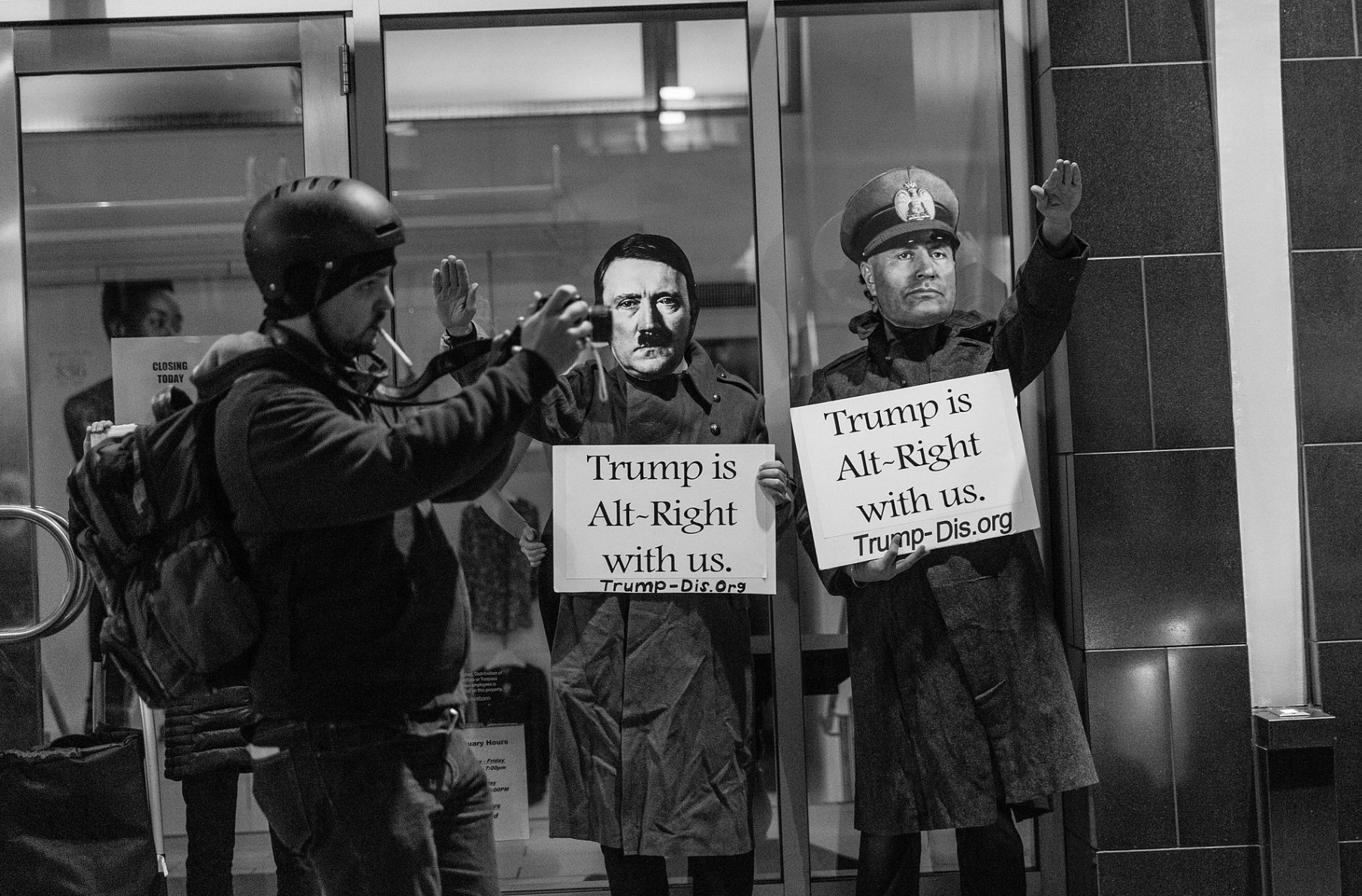Before 2017, the alt-right did not exist in headlines or at the forefront of mainstream politics. The alt-right was mostly present in unknown corners of the internet, “the realm of the unserious.” Then, white nationalism began to come “out of the shadows.” In November 2016, Richard Spencer, a more well-known alt-right leader, stood in front of hundreds of people at a D.C. conference, yelling, “Hail Trump, hail our people, hail victory!” His listeners followed with Nazi-like salutes. When bombarded with criticism, he played his actions off, calling them “ironic.” For a character like Spencer, though, it was clear that this moment was not to be viewed as ironic. He was furthering the cause of white supremacists on the national stage. After all, this is the man who has argued that his young and white identity is being “demeaned” in society.
In early August 2017, the alt-right showed its face again. This time, it was in response to Google firing its employee James Damore for his sexist manifesto entitled “Google’s Ideological Echo Chamber.” The manifesto calls out Google for its “biases,” outlines what he believes are the personality differences between men and women, why those differences explain the gender gap in engineering and leadership roles at Google, and to stop alienating conservatives. Among other claims, he posits that Google’s gender representation efforts are “unfair, divisive, and bad for business.” Google swiftly fired him for violating their rules by “advancing harmful gender stereotypes.” While many employees criticized the memo, a few came out publicly in support of it, and others anonymously posted screenshots of Google’s warning that they would blacklist any employees who did not support their diversity efforts.
Minutes after Damore was fired, the alt-right circles blew up in rage. Users on Twitter and 4chan attempted to organize a boycott of all Google services. More prominent members of the alt-right came to Damore’s side, as well. In a Facebook post that has since been removed, Milo Yiannopoulos called Google’s decision “disgusting” and offered to help Damore get back on his feet. This came at a time when the alt-right had been organizing to rebuke tech companies for their bias against or removal of right-wing users, including companies like PayPal, GoFundMe, Patreon and Airbnb. Of course, the alt-right could only get so far, given that tech companies are operating within the law. However, as New York Times writer Kevin Roose put it in an article on August 9, 2017, “by forcing these companies to take sides in an emerging culture war, these activists have already achieved a kind of perverse goal. They have found a new punching bag, and they have proved that in the hyper-polarized Trump era, there is no such thing as neutrality.” It was only a few days later that the alt-right presented a new physical threat to the public that few could have predicted.
Many Americans locate the events in Charlottesville in August 2017 as the first time the alt-right became a living and breathing movement. On that day, Atlantic writer Angela Nagle writes, “the alt-right took on a form that most Americans could finally grasp as a real, and unambiguous, political movement.” White nationalists gathered in Charlottesville, Virginia, a college town, on August 12 for the “Unite the Right” march. The cause of the march (reportedly, at least) was to protest the removal of a statue of Robert E. Lee; however, there was a greater underlying rage fueling the groups who organized the rally. That afternoon, during the protests, a car drove into a group of counter-protestors, leaving a woman named Heather Heyer dead. At least 34 people were wounded that day.
In his response to the tragedy, Trump deflected blame from the side of the alt-right protestors to the counter-protestors, saying in a public statement, “we condemn in the strongest possible terms this egregious display of hatred, bigotry and violence on many sides, on many sides.” While he released another statement condemning racism, the next day, he said, “‘you had some very bad people in that group, but you also had people that were very fine people, on both sides.’” At that moment, it became incredibly clear that not only did Trump have alt-right supporters, but he supported the alt-right. Even if the President was forced to cover up for himself a day after his initial statement, it was clear that in his mind, the anti alt-right protestors were villains in his mind. When President Trump failed to place complete blame on the organizers of the “Unite the Right” march, many Americans realized that this meant he would continue to promote the cause of white supremists throughout his presidency.
